
Johann Friedrich Bause (3 January 1738 in Halle - 5 January 1814, Weimar) was a German copper engraver; primarily of portraits.

Johann Friedrich Bause (3 January 1738 in Halle - 5 January 1814, Weimar) was a German copper engraver; primarily of portraits.
He was born to Christian Gottlieb Bause (b.1696), supervisor of the Halle saltworks, and his wife, Sophia Elisabeth née Dryander (1705-1761). [1] He was initially self-taught. In 1759, he briefly worked in Augsburg, under the direction of Johann Jacob Haid. His inspiration came from the German expatriate engraver, Johann Georg Wille. While in Augsburg, he also made the acquaintance of portrait painter, Anton Graff.
In 1763, he married Henriette Charlotte Brünner, and they had two daughters. The eldest, Friederike Charlotte , had a talent for music, but died when she was only nineteen. The younger, Juliane Wilhelmine, married the banker, Karl Eberhard Löhr (1763–1813), son of the banker Eberhard Heinrich Löhr , in Leipzig. [2] She also became an engraver and painter. [3]
He moved from Halle to Leipzig in 1766, where he was named a Professor of copper engraving at the new Hochschule für Grafik und Buchkunst, and specialized in portraits. He also joined the famous Freemasons lodge, Minerva zu den drei Palmen . In 1786, he was named an honorary member of the Prussian Academy of the Arts. [4]
His final engraving was made in 1809, when his eyesight was beginning to wane. In 1813, he followed Juliane (who had recently been widowed) to Weimar, when she was expelled from her estate by General Jean Toussaint Arrighi de Casanova, the French Governor of Leipzig.
His works, which are very numerous, are chiefly executed with the graver, which he handled with great purity and firmness. The following are his principal plates, except his portraits, which are chiefly of German characters of little celebrity:* [5]

A list of his works may be found in Nagler and Heineken. See also Dr. G. Keil's Katalog des Kupferstichwerkes von Johann Friedrich Bause, Leipzig, 1849. His daughter, Juliane, etched a number of landscapes after Kobell, Both, and other artists. [5]
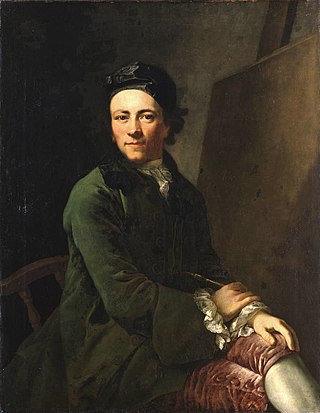
Anton Graff was an eminent Swiss portrait artist. Among his famous subjects were Friedrich Schiller, Christoph Willibald Gluck, Heinrich von Kleist, Frederick the Great, Friederike Sophie Seyler, Johann Gottfried Herder, Gotthold Ephraim Lessing, Moses Mendelssohn and Christian Felix Weiße. His pupils included Emma Körner, Philipp Otto Runge and Karl Ludwig Kaaz.

Georg Friedrich Knapp was a German economist who in 1905 published The State Theory of Money, which founded the chartalist school of monetary theory, which argues that money's value derives from its issuance by an institutional form of government rather than spontaneously through relations of exchange.
Johann Christoph Altnickol, or Altnikol, was a German organist, bass singer, and composer. He was a student, copyist and son-in-law of Johann Sebastian Bach.

Jeremias Falck was an engraver of the 17th century Baroque, born and active in the Polish–Lithuanian Commonwealth. He signed most of his over 300 works as J. Falck, sculp., a few as Falck Polonus or Falck Gedanensis.

Johann Adam Klein was a German painter and engraver.

Johann Octavian Salver (1732–1788) was a German diplomat, archivist, and engraver.

Johann Georg Wille, or Jean Georges Wille was a German-born copper engraver, who spent most of his life in France. He also worked as an art dealer.

Johann Samuel Eduard d'Alton was a German anatomist born in Sankt Goar. He was the son of engraver Eduard Joseph d'Alton (1772–1840).

Veit Hanns Friedrich Schnorr von Carolsfeld was a German portraitist.

Johann Gotthard von Müller was a German line engraver.
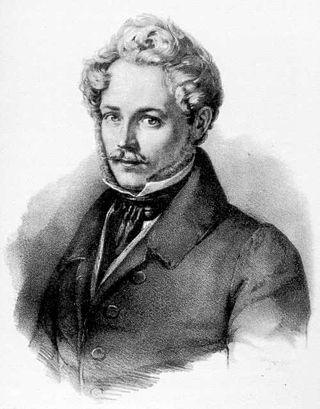
Ernst Fries was a German painter, draftsman, watercolourist, etcher, printmaker, and lithograph. Besides Karl Philipp Fohr and Carl Rottmann, he was the youngest of the so-called triumvirate of Heidelberg Romanticism. His works represent a transition from Romanticism to Realism.

Johann Elias Ridinger was a German painter, engraver, draughtsman and publisher. He is considered one of the most famous German engravers of animals, particularly horses, hounds and hunting scenes.
Heinrich Friedrich Franz Körte was a German natural and agricultural scientist, and for thirty years Professor of Natural Sciences at the Agricultural Academy in Möglin, which was founded by Albrecht Daniel Thaer.
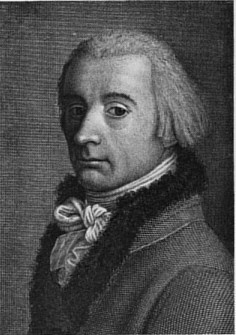
Johann Heinrich Lips was a Swiss copper engraver; mostly of portraits.

August Buchner was a German philologist, poet and literary scholar, an influential professor of poetry and rhetoric at the University of Wittenberg.

Christian Ferdinand Hartmann was a German portrait and Classical history painter.
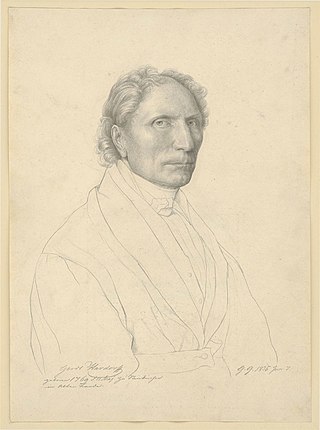
Gerdt Hardorff was a German painter, art collector and drawing teacher. He is sometimes referred to as The Elder to distinguish him from his son, Gerdt, who also became a painter.

Christian Ludwig von Hagedorn was a German art historian and collector, as well as an amateur engraver. He also served as a diplomat. His elder brother, Friedrich, was a well known poet.

Juliane Wilhelmine Bause was a German painter and copper engraver.
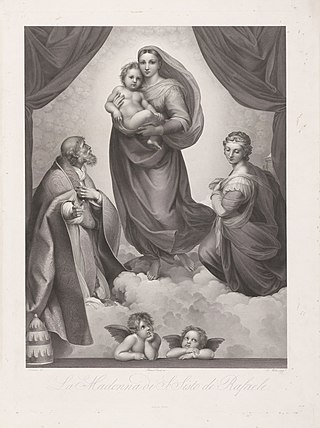
Johann Friedrich Wilhelm Müller was a German copperplate engraver.